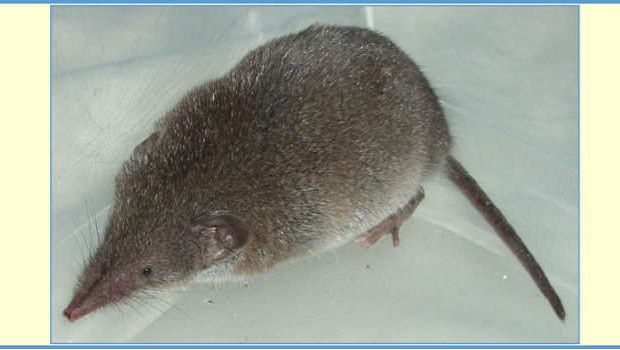Biodiversity Group: The Common Shrew
Common shrews are closely related to the mole and hedgehog. They are 5 – 8cm in length, weigh 5 – 14 grams and have dark brown backs, chestnut sides and are grey or silver underneath. Their eyes and ears are very small and their snouts long and mobile. Their teeth wear down the same as human teeth but theirs have iron deposited in the enamel making them appear red tipped but also making them more resistant. They spend most of their time in burrows previously used by other animals and, although mostly nocturnal, they can also be active during the day as they need to eat every 2 – 3 hours to survive. They are highly territorial, defending their territory very aggressively and only coming together to mate. The females have 3 or 4 litters between May and September with the 5 – 7 young having up to 3 different fathers! The mother’s milk is very rich so the young grow rapidly and are independent at 1 month old. If disturbed the female will move the young, all of them travelling in a caravan fashion each one holding onto the tail of the one in front. They eat anything available including earthworms, snails, woodlice and some carrion and are important destroyers of the insects and slugs that harm crops. Shrews are themselves a food source for other animals including the barn owl, tawny owl, weasel, fox, stoat, magpie, jackdaw, adder, smooth snake and kestrel. Cats also kill a large number but usually abandon them as glands on the skin make them foul tasting. They are short lived with most dying before they are a year old.
Did You Know?
- Shrews must eat 80 – 90% of their body weight every day and will starve to death if they don’t eat for just half a day.
- They do not hibernate but become less active in winter. Their size shrinks (which includes their liver, brain and skull) so they need less food.
- Shrews have the highest metabolic rate of any other animal.
- Shrews are noted for providing a home for a large number of parasites, normally transmitted to them from their prey

